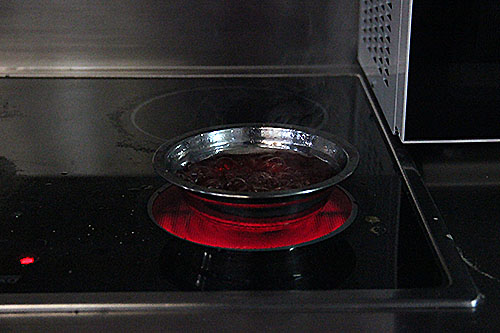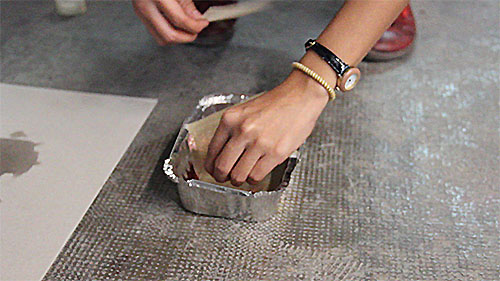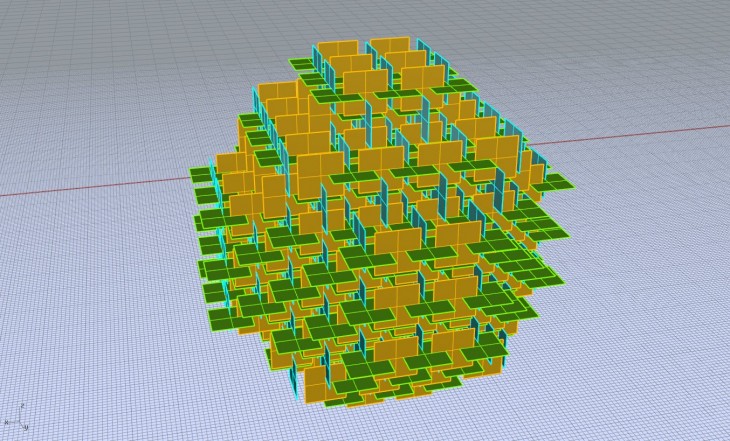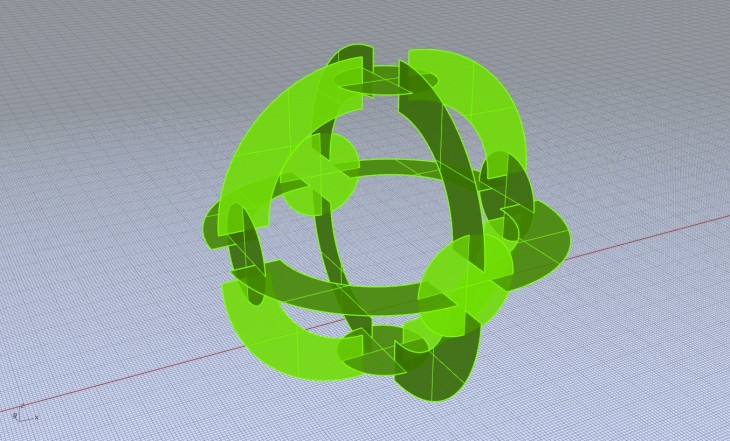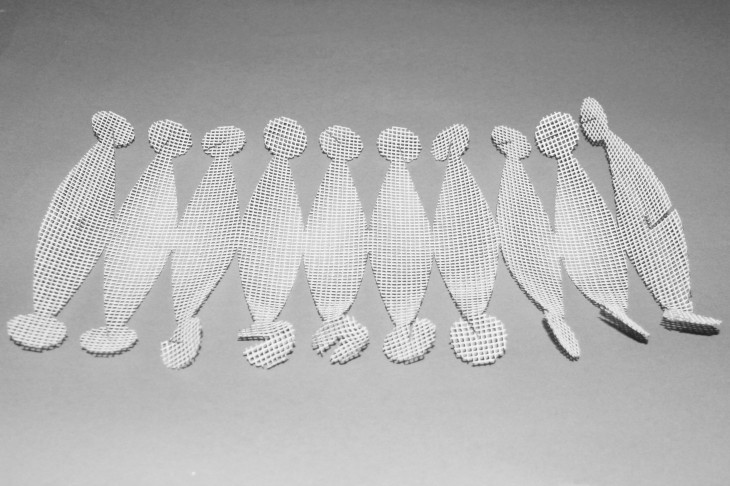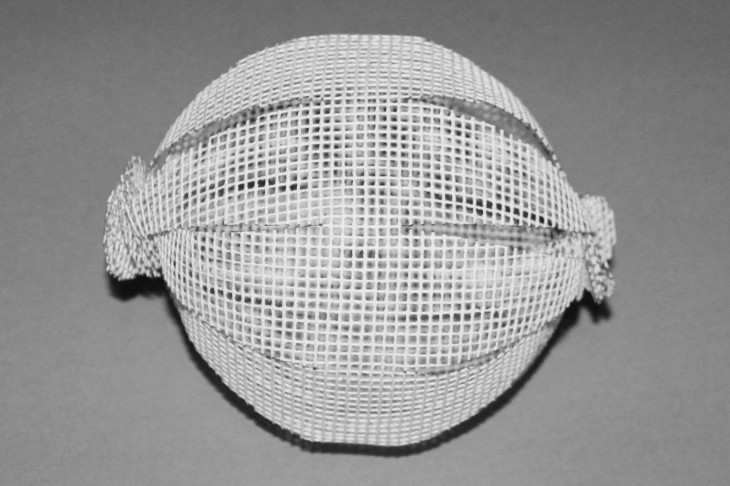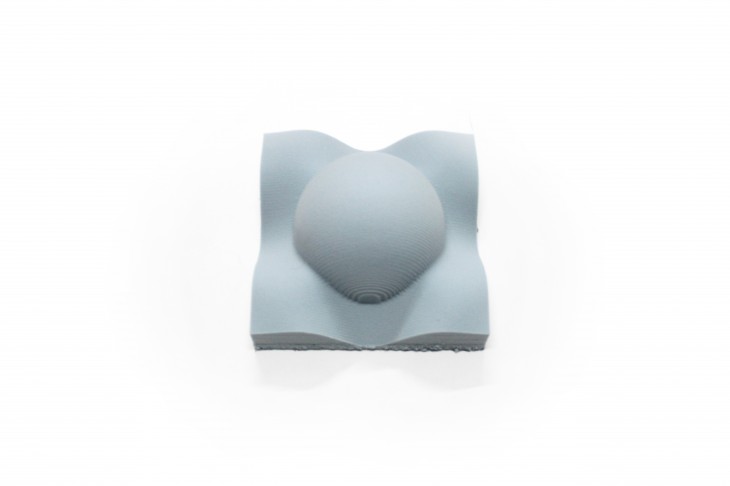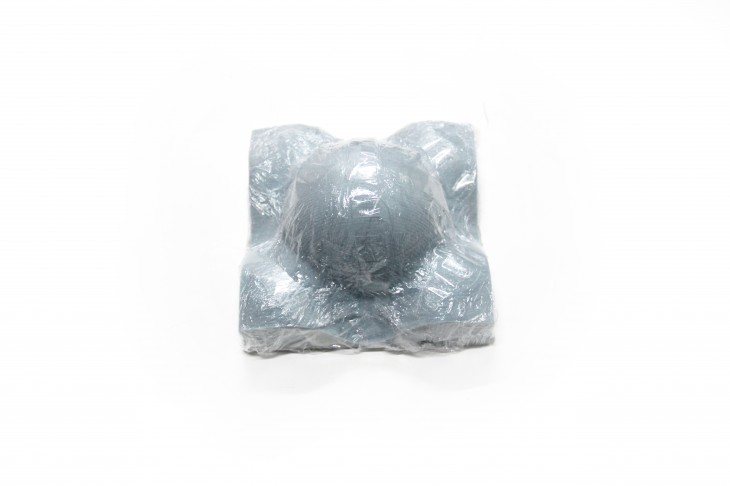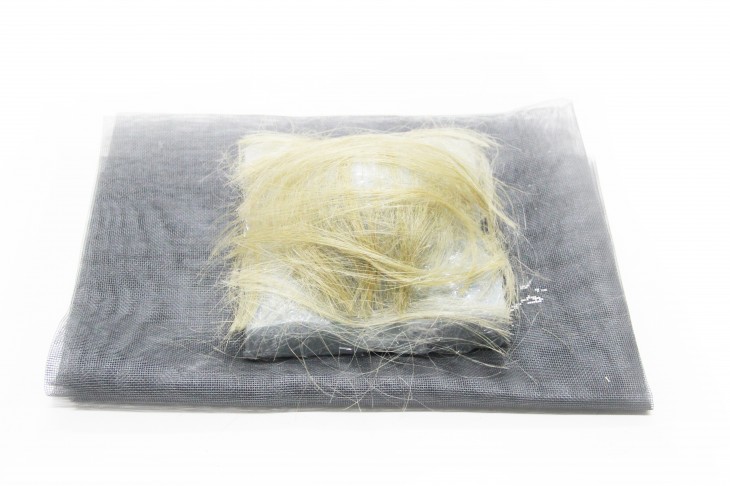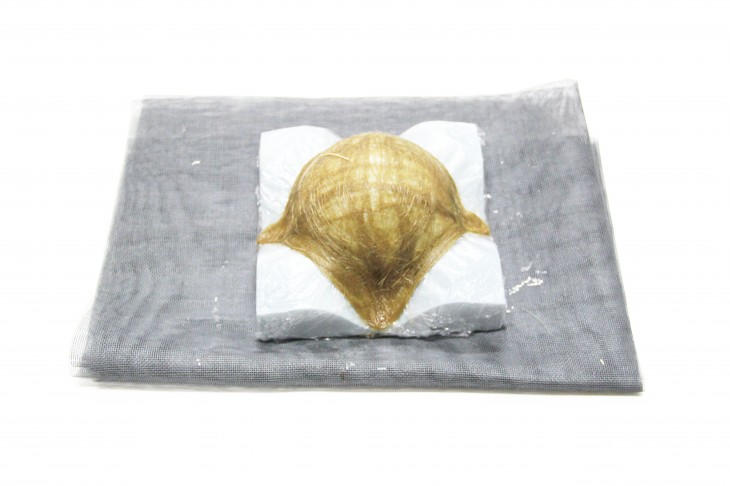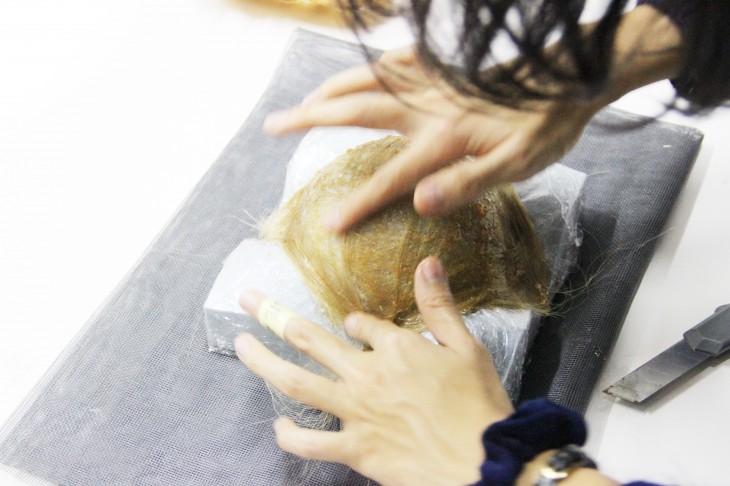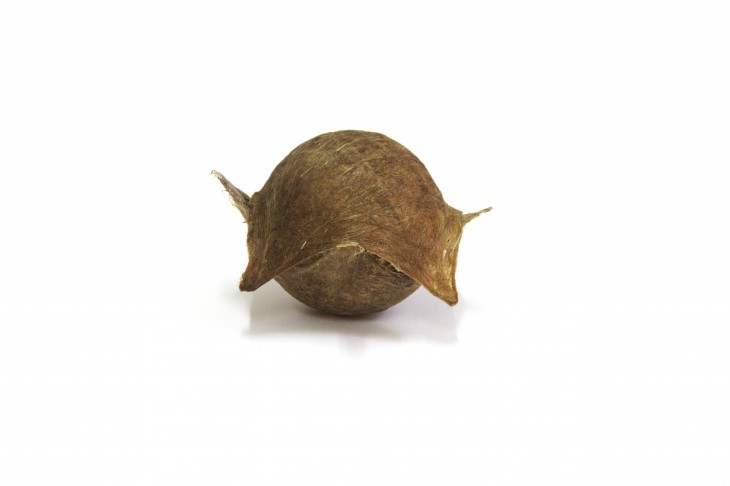The research was based on the project made last year in iaaC, which explored the production methods and material behaviors in plastic biodegradable systems. It investigates DIY biomaterial production and passive reconfiguration processes to create components for a dissolving architecture.
The Bio Plastic research was made by Sviatlana Matushko, Mardet Gebreyesus, Dhwani Patel, under the tutoring of Areti Markopoulou and the assistance of Alexander Dubor and Moritz Begle.
At this class we tried through a series of tests with different tools of digital fabrication machines and through a series of experimentation of ways of assembling and making the materials to be transformed later, into a lamp.
[Process]
Recipe:
35g of gelatine powder from the upermarket. 200ml of vinegar.
Boil the vinegar until it bubbles and add the gelatine, mix it until there is no more powder.
[Test 1 - Binding layers of hemp cloth]
Dig the hemp cloth into the mixed liquid then hang for cooling down in room temperature also in the fridge.
Result: The material does not stick together.
[Test 2 - layers of hemp cloth on a wood frame]
Spray the mix liquid on the flat cloth.
Result: The hemp fiber couldn’t stick together, also the liquid couldn’t gave the cloth a thicker surface. After one day the material still remain in the liquid state. Assuming the cloth has less absorbency compare with fiber.
[Test 3 - Testing hemp cloth under the process of laser cutting]
Using only one material, at this stage the hemp cloth, we thought at different geometries that under a process of a laser cutting machine, would produce a sphere of 12cm diameter.
Idea 1 – Pixelate volume
Idea 2 - Mortise surface
Idea 3 - Bending surface
The Bending surface was choose due to the simplicity of the way of producing and because it took advantage of the malleability of the material.
Result: For resulting in a perfect sphere shape, we needed to provide some connection inside the sphere between the two poles.
[Test 4 - Testing hemp fiber under the process of CNC Router Milling]
After so many failed tests of the use of hemp cloth, we started to test the bioplastic with hemp fiber.
For the CNC Router Milling exercise we used high density foam and milled two 12cm diameter half spheres to function as a mold. The foams were milled with the same geometry, but with different characteristics of milling strategy (bigger step-over) to see how the mold influence in the final shape.
The process consist of wrapping the foam with cooking plastic and then assembling the fibers in a specific direction and applying the gelatin. Then wait for them to dry and applying again another layer of fibers and gelatin. How thick the final product is, depends on how many layers are applied, but also, this will affect the time of drying. The best result for us came on a three layers of fiber and gelatin.
Result: The two foams worked in a similar way. Due the roughness of the bioplastic the bigger step over strategy could function and the fact that we were using cooking plastic helped to maintain the desired shape and it was easy to took it off later. The resistance was good and also the integrity of the material was good. It could be cut and perforated and still be strong.
The Bio Plastic together with a strategy of CNC Milling mold was choose due to
-the lightness of the material achieved, a characteristic to be explored later
-the freedom of form due to the CNC Router process and
-the lightness of the material and it relative strength.






